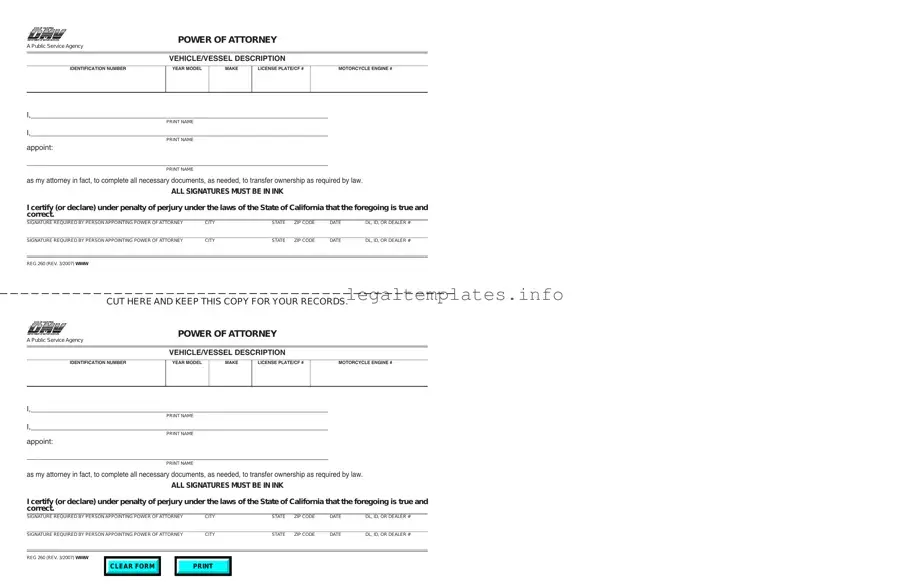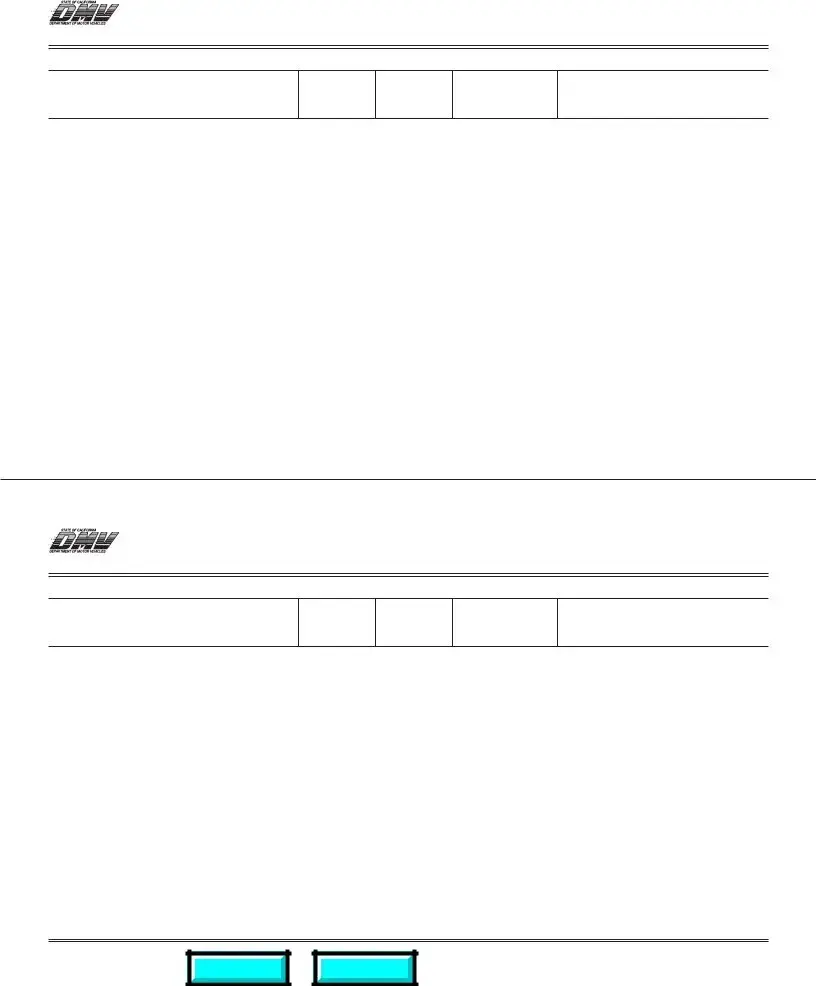What is a Vehicle POA REG 260 form?
The Vehicle POA (Power of Attorney) REG 260 form is a legal document used in vehicle transactions. It grants someone the authority to act on another person's behalf in matters related to the Department of Motor Vehicles (DMV). This can include buying, selling, or registering a vehicle.
When do I need to use the Vehicle POA REG 260 form?
This form becomes necessary when you cannot personally handle DMV transactions and need to appoint someone else to do so. This might be due to being out of town, having health issues, or other personal reasons that prevent you from managing vehicle-related tasks yourself.
Who can be appointed as a power of attorney on the REG 260 form?
Any competent adult can be appointed as your power of attorney. This person could be a family member, friend, or professional with whom you trust to handle your DMV transactions accurately and legally.
How do I fill out the REG 260 form?
To fill out the form, you will need to provide specific details including the full legal names of both the grantor (the person providing the power) and the grantee (the person receiving the power), details about the vehicle in question, and the specific powers being granted. It must be signed by the grantor in the presence of a notary public or certified DMV representative.
Is notarization required for the Vehicle POA REG 260 form?
Yes, in most cases, the form needs to be notarized to verify the identity of the grantor and to ensure the document is legally binding. Some states might have exceptions or additional requirements, so it's advisable to check with local DMV offices or legal advice for specific state requirements.
Can the power granted through the Vehicle POA REG 260 form be revoked?
Yes, the power granted through the form can be revoked at any time by the grantor. This is typically done by notifying the grantee in writing and destroying all copies of the POA document, as well as notifying the DMV of the revocation.
Does the Vehicle POA REG 260 form allow the grantee to sell the vehicle?
Yes, if the powers granted in the form explicitly include selling the vehicle, then the grantee is legally allowed to do so. It's important to specify this in the document to ensure clarity and legality in the transaction process.
What happens if the Vehicle POA REG 260 form is filled out incorrectly?
If the form is filled out incorrectly, it might not be accepted by the DMV, leading to delays or complications in handling vehicle matters. It's crucial to carefully review the form, follow all instructions, and preferably, seek legal advice or assistance to ensure all information is accurate and complete.
Is there a fee to file the Vehicle POA REG 260 form with the DMV?
Filing fees can vary by state and by the specific transaction being conducted. It's recommended to contact your local DMV office directly to inquire about any applicable fees related to the submission of the Vehicle POA REG 260 form.
How long does the power of attorney granted through the REG 260 form last?
The duration of the power of attorney can be specified in the document itself. If no expiration date is mentioned, it remains effective until it is revoked by the grantor. However, some states might impose limitations on the duration, so it's wise to consult legal advice or local state laws for guidance.

